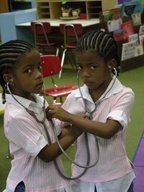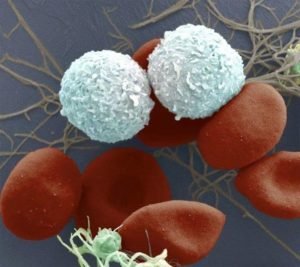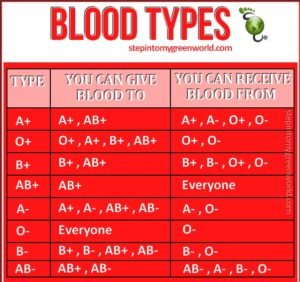The Circulatory System

If we think of our body as a city then the circulatory system is the subway train that travels through it and feeds everything. The heart is the pump in humans. It beats about 72 times a minute when resting, 38 million times in one year. Newborn = 130/minute , adult = 60-100. Pumps 1.3 gallons of blood \ minute.
Why does the heart beat faster when we are working or exercising? Pulmonary circulation – to lungs
Coronary circulation – to heart
Systemic circulation – to rest of body Blood travels about 12,000 miles a day
The HEART : 2 ATRIA are the 2 top chambers that receive blood from the body and the lungs. 2 VENTRICALS – 2 bottom chambers – right pumps blood to the lungs – left pumps blood to the body and is the strongest chamber.
There are 4 valves in the heart that keep blood from flowing backwards and it is these that produce the sounds LUB-DUB. Function: to receive nutrition and deliver it to rest of body and deliver wastes to be discarded by body
Each time the heart beats it is sending another wave of blood through the body. BLOOD VESSELS ARE LIKE TUBES THAT ARE ELASTIC.
Arteries travel from the heart carrying OXYGEN from the lungs to the CAPPILLARIES ( the smallest vessels), They DELIVER THE OXYGEN AND FOOD TO THE CELLS.
Veins travel back to heart carrying wastes= CO2 to the SVC & IVC of the heart.
Coronary arteries supply the heart BLOOD = the fluid of life for growth and health. Carries nourishment from digestion, harmones from glands, Disease fighting substances, Wastes to kidneys.
BLOOD is ALIVE the cells have a life cycle RBC WBC and PLATELETS to clot the blood RBC that carry oxygen.
WBC are germbusters: Phagocytes eat germs. Lymphocytes kill by blasting with antibodies.
PLASMA = 55% of blood, straw colored liquid, contains salts and minerals, antibodies, 90% water
SA node, sinoatrial node, AV node these are bundles of cells that can generate electrical impulses and the special fibers of the heart contract!
Blood TYPES DIFFERENT CHEMICALS – if given wrong type is attacked.
Human blood has the same saltiness as sea water.
If leg goes to sleep not getting blood supply and oxygen.
KIDNEYS filter all of blood
How Circulatory system flows:
1. SVC & IVC (Superior Vena Cava and Inferior Vena Cava)
2. right atrium
3. tricuspid valve
4. right ventricle
5. pulmonic valve
6. pulmonary artery
7. lungs to pick up oxygen
8. pulmonary veins (only veins to carry oxygenated blood)
9. left atrium
10. mitral valve
11. left ventricle
12. aortic valve
13. aorta to rest of body
Vessels are tubes that transport blood. A child has vessels that would stretch 60,000 miles long.
Pulse and blood pressure Systole = beats higher # 110-150 Diastole = relaxes lower # 60-80 3 kinds:
1. veins – transport wastes rich blood back to the heart at low pressure there are 3 layers. They are not as strong as arteries, They receive blood from capillaries, the blood is a darker color. There are valves throughout the veins to help with flow of blood.
2. arteries – elastic and very strong. They take oxygen rich blood to all the cells in the body
3. capillaries – are thin and fragile only 1 cell thick, nutrients and oxygen flow to the cells in the body and co2 and wastes are picked up. A single RBC lives about 3 months/ makes 130,000 round trips through the body Veins, arteries, and capillaries measure over 62,000 miles
Blood cells under electron microscope







